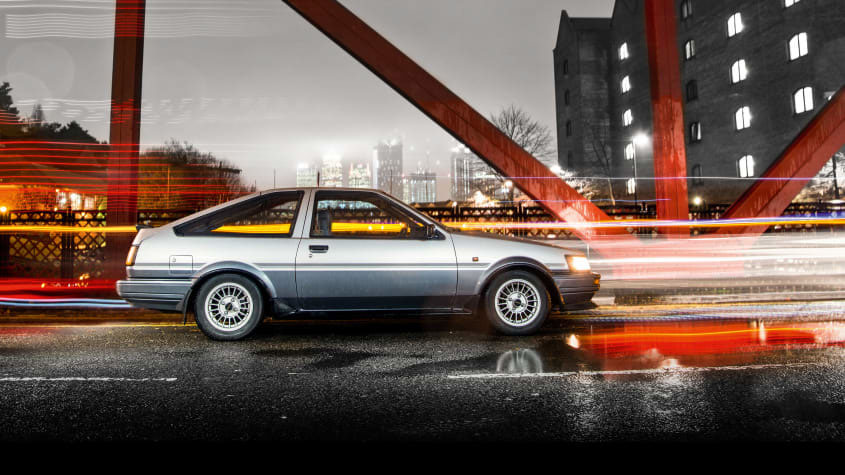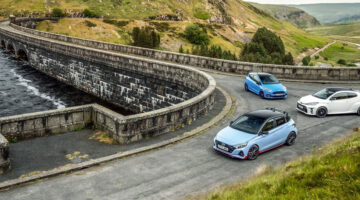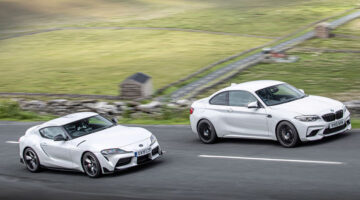Cult cartoon star, choice of drifting legends, and a rear-driver of considerable repute in its own right. More than 35 years after its launch, can the AE86 live up to the hype?
This Corolla was loaned to us from the Toyota GB heritage fleet on the understanding that we wouldn’t drift it. We assured them we wouldn’t be hanging out on the lock-stops with smoke wreathing off the rear tyres, and a couple of weeks later the light metallic blue AE86 was sitting on my driveway, looking fantastic. Such is its reputation, I was surprised that when I looked again an hour later it wasn’t sideways, nose in the privet and its arse hanging over into next door’s.
No drifting. Seriously? Maybe when the student Bill Clinton was handed a spliff at college he really didn’t inhale. Maybe when I hand the Corolla back I won’t have cornered it, at length, looking through the side windows. The chances of either of those things being true seems quite slim.
Even though I’m old enough to appear in the fossil records of motoring journalists, up to this point I had never driven an AE86. I just missed out on driving one when it was new, joining Motor magazine in 1987. At that time the affordable rear-drive coupe breed had made it onto the list of endangered species; production of the pretty Alfa GTV was coming to an end, Ford was shifting the last Capris with special run-out models such as the Brooklands, and the Isuzu Piazza, newest of them all, felt clunky even after a fettling by Lotus and wasn’t long for the new car price lists. And before the end of ’87 the AE86 would be another rear-drive coupe with a great future behind it.
Front-wheel drive was the way forward, which was a bit depressing for enthusiasts who, like me, enjoyed going forward with a cheeky twist of opposite lock. The Corolla’s classic/retro/archaic layout certainly wasn’t hampering it in motorsport as it had proved hugely successful on circuits and rally stages around the world. Win Percy had won the 1982 British Saloon Car Championship in the AE86’s predecessor, the styled-on-Etch A Sketch Corolla Coupe (TE71), and the softer-edged AE86 did even better, winning back-to-back titles in ’86 and ’87 in the hands of the ever-committed, kerb-striking, often two-wheeling Chris Hodgetts. And in between, Per Eklund drove a Corolla AE86 to overall Group A victory in the 1985 British Open Rally Championship.
In many ways, the AE86 was Toyota’s evolution of the Escort RS1600. Sure, it was a bit more modern with disc brakes all round, more gears, and coils rather than cart springs at the rear, but much of its tech spec was the same: MacPherson strut front suspension, live rear axle with four-link longitudinal location and Panhard rod, limited-slip differential… Oh, and the ‘4A-GE’, all-aluminium, 1.6-litre, 16-valve, twin-cam engine that some thought bore some striking similarities to Ford’s Cosworth-developed Belt Drive A type…
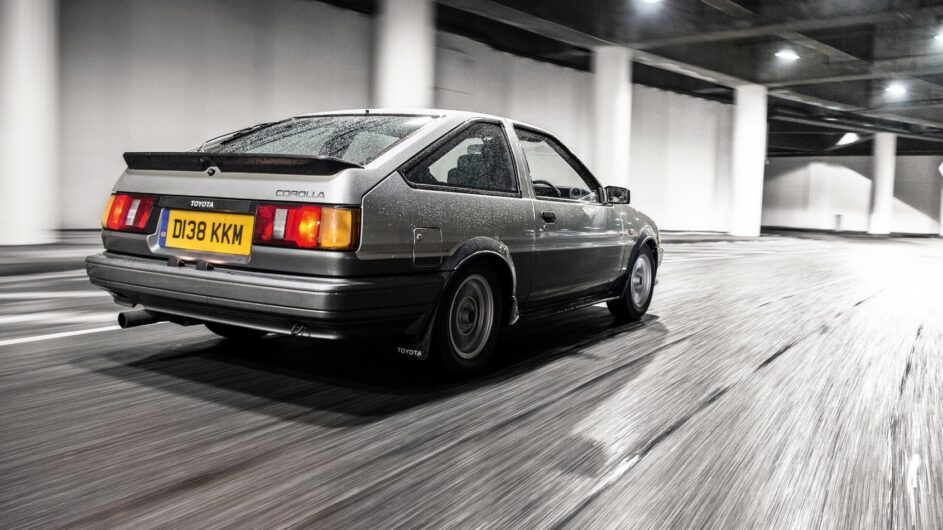
Yet for all its many competition successes, there’s another reason why the little AE86 is right up there in the pantheon of iconic Japanese cars alongside the GT-Rs and Supras, Evos and Imprezas, NSX and the LFA. It’s because of a man called Keiichi Tsuchiya, aka Drift King. Unable to afford to race in his youth, Tsuchiya honed his car control skills on Japan’s sinuous mountain passes at the (fast twirling) wheel of his AE86 Sprinter Trueno – a JDM version of the Corolla. His commitment to the gratuitous, extended oversteer event gained him the respect of his fellow street racers, who crowned him Drift King. And there’s every reason to believe that the AE86-sliding hero from Initial D, the cult Japanese anime cartoon series, was modelled on him. He certainly helped with the research.
Tsuchiya did go racing and gradually toned down his exuberance to enjoy an impressive career; he just missed out on the top step at Le Mans in 1999, but it’s his gift of drifting that will more likely be remembered as his motorsport legacy. As the sport’s popularity grew, reverence for the AE86 only went up.
So what’s it like, this legendary coupe? Small, even compared with a current Fiesta, narrow and even narrower tracked, its dinky 14-inch alloys and plump 185/60 tyres sheltering deep in the arches. It doesn’t say ‘AE86’ anywhere on it, just ‘Corolla’ and ‘GT twin-cam’ on the tailgate, almost unreadable on this car as the sticker and the paint are so similar in colour.
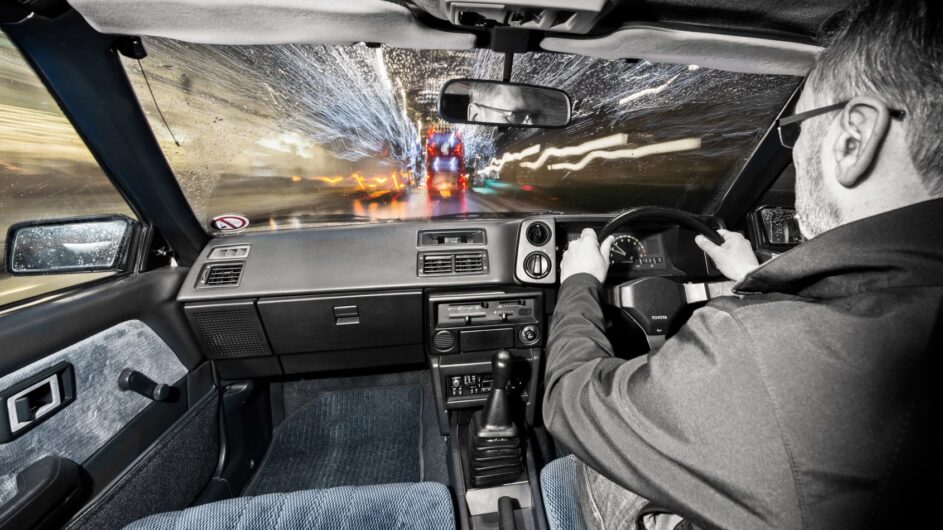
It’s always interesting to return to a previously familiar period and marvel at how simple cars were back then. Inside, the Corolla feels narrow and sparsely equipped. There’s not much sporty about the blue velour-trimmed ‘sports seats’, and the thin rim of the steering wheel feels a bit mean, but when the 1.6-litre ‘twink’ catches, everything seems better. There’s an edgy, snuffly bark when you squeeze the throttle, and rolling away, the Corolla feels full of potential. The non-assisted steering is surprisingly heavy at town speeds but lighter and full of feel beyond that, the gearlever has a light, positive action and the ride is more supple than expected.
By the standards of the mid-’80s, the 16-valve engine boasted a decent bhp-per-litre output, Toyota extracting 123bhp at 6600rpm from the 1587cc in-line four. Yet, although the Corolla is a featherweight – at 970kg it’s 133kg lighter than the new Alpine A110 – the engine is also very light on torque by today’s standards. Give the throttle a moderate push and there’s an encouraging bark from the engine and a nice kick, so initially it feels like the little coupe will manage OK, even though there’s just 107lb ft, delivered at a heady, your-call-is-important-to-us 5200rpm. But when you come to ask for real action, for an overtake, say, and you pin the throttle at ‘only’ 3500rpm or so, there’s not much response. Lots of noise, yes. It sounds like 200bhp but doesn’t go like it.
More sizzle than sausage, then. In truth, it’s the period modifications fitted to this car that are probably over-selling the performance. It has a Janspeed four-into-one tubular manifold and stainless steel exhaust, plus an Apexi induction kit. Together these may have tickled up the horsepower a little, but not dramatically, and not nearly as much as they’ve raised expectations.
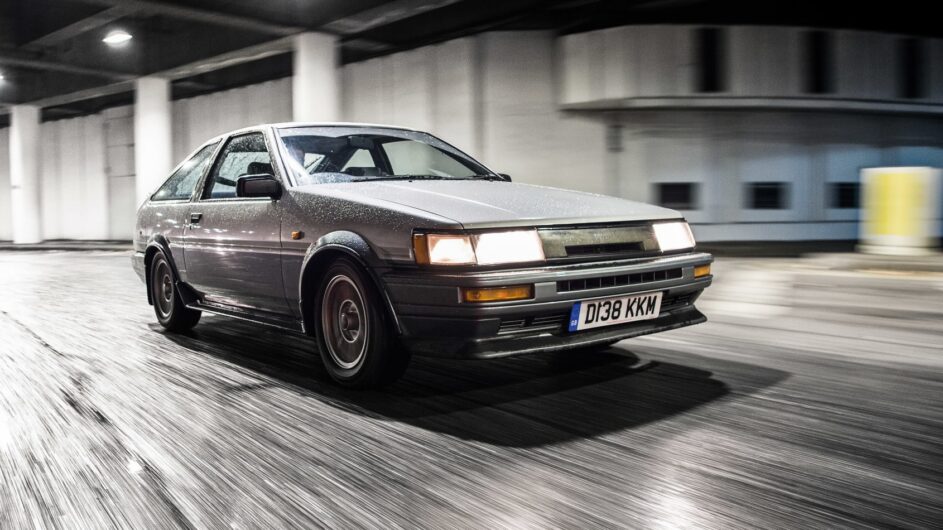
Don’t get me wrong, there’s a lot to like about this very ‘analogue’ car, particularly how it feels; it’s refreshingly tactile, and I like that it has body roll, taking attitude when you guide it into corners. There are more period mods to be noted: much fatter front and rear anti-roll bars, lowered Leda suspension and a strut brace between the front suspension turrets. Yet it doesn’t feel stiff, begging the question how soft was the standard set-up? On the stiffness spectrum it’s at the same end as the loose-limbed A110, but it all works together, the turn and roll rates matched, the masses well-balanced, front to rear. It’s an homogenous dynamic performance.
When we’d agreed to the no drifting request I had advised Toyota GB that if the roads were wet there would almost inevitably be oversteer, purely for the camera, of course. Yet when the rain and the opportunities come, they go unexploited. The AE86 doesn’t seem to have the ready torque to kick the tail out even in slow speed corners, and given that at low speeds the non-assisted steering feels hefty and a bit unwieldy, I’m not sure I want to go there. At this point the AE86 seems as far away from opposite-lock nirvana and my expectations as could be.
It’s not supposed to be like this. I am struggling to reconcile the revered status of this celebrated Japanese drift car with the reality so far. The phrase ‘never meet your heroes’ begins playing on a loop in my head and I recall the response to a piece written for Autocar by my very experienced and erudite colleague, David Vivian, about the Lotus Cortina. He was quite underwhelmed by it and couldn’t see what all the fuss was about. The reader backlash was swift, angry and spittle flecked. How dare he trash an icon and besmirch the reputation of a car that ‘proper drivers’ including Jim Clark had three-wheeled to victory? Is the Corolla going to be my Cortina? Will a generation denounce me? Will I get hate mail saying I’d be better off with the later front-drive Corolla GT because any fool can drive that quickly?
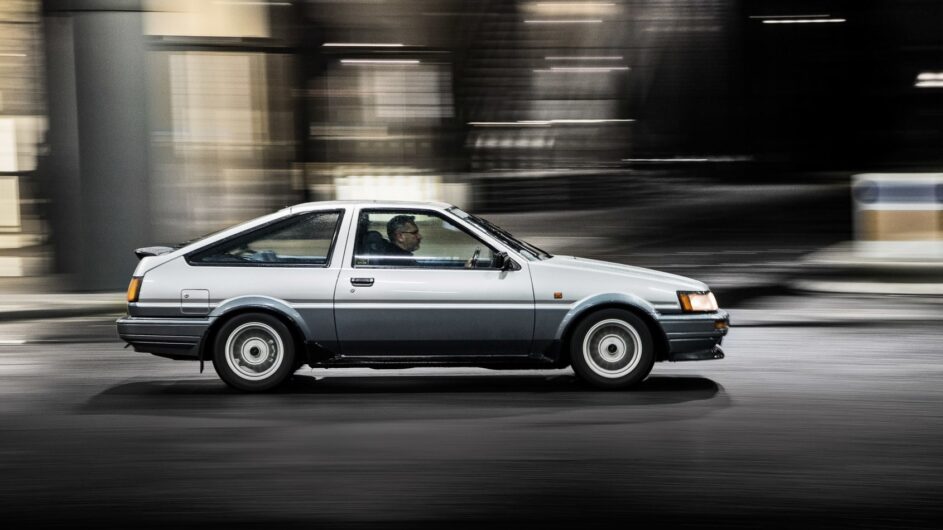
When Toyota started work on the fifth-generation Corolla the company was transitioning to front-wheel drive. Being unsure about how well the development process would go, particularly in terms of durability, it took the decision to stick with rear drive for the AE86 GT Coupe. As it turned out, Toyota did go on to make a front-drive, hatchback Corolla GT (AE82) with the same 4A-GE twin-cam engine. Not only that, it made a mid-engined car with the 4A-GE too: the original MR2.
Without wishing to make marketing professionals feel uncomfortable, this meant that at one point in the mid-’80s, Toyota offered three $12,000 sporty cars with the same engine but entirely different layouts. I can’t think of any time in motoring history before or since that this has happened.
In late ’86, Motor magazine took these three Toyotas to MIRA to compare their handling. With the mass of its engine in the middle and thus the lowest polar moment of inertia, the MR2 was – as engineers would hope – the quickest around the track. But, boy, was it tricky at the limit. The front-drive Corolla GT was safe and sweet but slower and a little unexciting. And the Coupe? It had the best weight distribution – a perfect 50:50 fully fuelled – and despite lots of body roll was the most exploitable at the limit. It was a fraction slower than the MR2, but allowing themselves a couple more laps to extract its full potential, it went quickest. The MR2 was already on the limit everywhere.
Yes, the Coupe’s ride was caught out by big bumps thanks to that live rear axle, but Motor’s testers concluded that the Corolla GT Coupe ‘may appear like a hark-back to the past, but we liked it a lot, as it proved both highly able and enjoyable’.
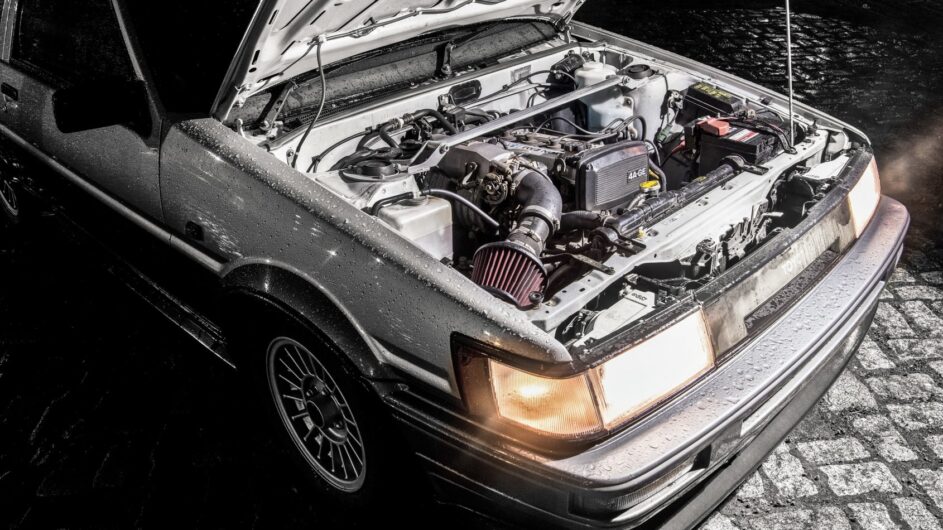
At the end of ’87, Tiff Needell track-tested Chris Hodgetts’ BTCC-winning AE86 racer against the front-drive AE82 Corolla GT that he’d raced that season. He concluded that the AE82 was easier to drive quickly, but that the AE86 was more fun.
Everything points to the AE86 being awesome. Is it me? Am I failing to find its potential? Turns out I am. The moment of revelation, the moment when the AE86 clicks, is a late-evening dash home along a familiar, bumpy back road. I am in a hurry and a bit frustrated at not ‘getting’ the AE86, and come into a tricky, tight right-hander a bit hot, dabbing the brakes, dropping into second and pitching the car in. And there it is. It all falls into place. The car seems to pivot around the gearlever, the tail edging out slightly, turning the car, and I pick up the throttle immediately and find the revs up at 5000rpm, so there’s enough urge to keep the back out there with just a tweak of opposite lock. It feels brilliant. Eureka!
The rest of the drive is a blast. It is so natural, so neat, so efficient. The steering weight isn’t an issue because when you carry speed into the apex, the car is up on its toes and starts to slip as you turn in. As long as you’ve downshifted there’ll be enough torque to keep the angle of the tail and give a bit of squat, lifting and unloading the front a little, lessening the steering effort required and allowing an easy touch of opposite lock.
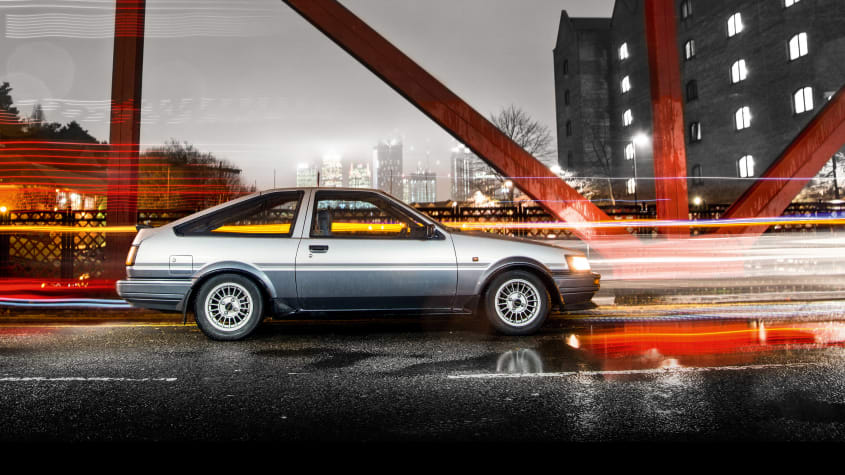
Not that you need to add much; the lightness of the Corolla means it’s not going far, while its narrowness means that you have more space to play with than most cars. You’ve got to work the engine mercilessly, treat it almost like the VTEC in a Honda Integra Type R, because unless the revs are up, the fire goes out. The rev counter shows yellow from 7000rpm and red at 7500 but it never gets there, bap-bap-ing into the limiter at seven, which is fine because a swift upshift at seven drops the revs to 5000rpm and peak torque every time. No chance occurrence, the ratios of the AE86.
It’s frantic fun. You feel you’re driving it like Chris Hodgetts, grabbing gears to keep it on the boil, even if that means first gear for some tight bends and pitching it at the corners… It’s an absolute hoot and, refreshingly, it all happens at quite modest speeds. I love it. But I have to confess that I still don’t know how you’d hold a long drift. Maybe you’d have to find a fast, open, third-gear corner and carry far more speed in than seemed sane, pitch it in with a flick of lock, get back on the gas right away and hold on! Dunno. Maybe that would work…
Toyota Corolla GT Coupe (AE86)
| Engine | In-line 4-cyl, 1587cc |
| Power | 123bhp @ 6600rpm |
| Torque | 107lb ft @ 5200rpm |
| Weight | 970kg |
| Power-to-weight | 129bhp/ton |
| 0-100kph | 8.3sec |
| Top speed | 196kph |
| Price when new | $11,092 |
| Value today | $12,000-48,000 |
This article originally appeared at evo.co.uk
Copyright © evo UK, Dennis Publishing

